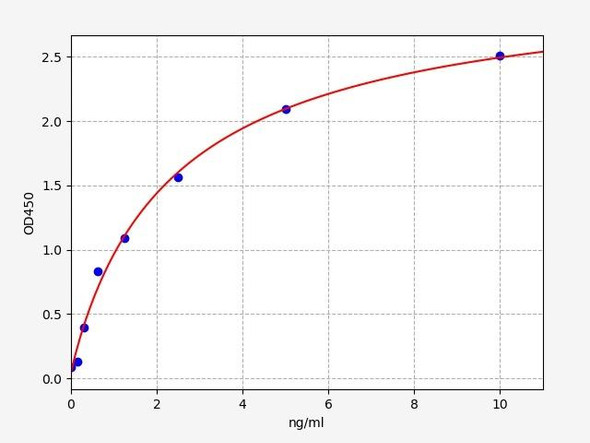

Aconitase Assay Kit - Information
Assay Genie's aconitase assay measures the isocitrate generated as a product of the aconitase reaction. The isocitrate is then oxidized producing NADPH and the oxidation product. The NADPH converts the dye to an intense violet color with an absorption maximum at 565 nm. The increase in absorbance at 565 nm is directly proportional to aconitase activity.
Applications
For quantitative determination of aconitase enzyme activity and high-throughput screening assays for aconitase modulator.
Aconitase Assay Kit - Key Features
- Fast and sensitive. Linear detection range (20 sample): 0.5 to 100 U/L for 20 min reaction.
- Convenient and high-throughput. Homogeneous "mix-incubate-measure" type assay. Can be readily automated on HTS liquid handling systems for processing thousands of samples per day.
Aconitase Assay Kit - Data Sheet | |
| Kit Includes | Assay Buffer: 10 mL Enzyme A: 120 uL NADP/MTT: 1 mL Enzyme B: 120 uL Standard: 1 mL Substrate: 1 mL |
| Kit Requires | Pipetting devices and accessories (e.g. multi-channel pipettor), clear flat-bottom 96-well plates, centrifuge tubes and plate reader. |
| Method of Detection | OD565nm |
| Detection Limit | 0.5 U/L |
| Samples | Biological samples (e.g. cell lysate, tissue homogenate, serum, etc.) |
| Species | All |
| Protocol Length | 30 min |
| Size | 100 tests |
| Storage | Store all components at -20°C upon receiving |
| Shelf Life | 6 months |
More Details
ACONITASE (ACONITATE HYDRATASE) is an enzyme in the citric acid (TCA) cycle that catalyzes the conversion of citrate to isocitrate. The activity of aconitase depends largely upon the iron-sulfur [Fe
4S
4]
2+ cluster. Related diseases include aconitase deficiency (e.g. myopathy and exercise intolerance), Friedreich's ataxia and diabetes.








